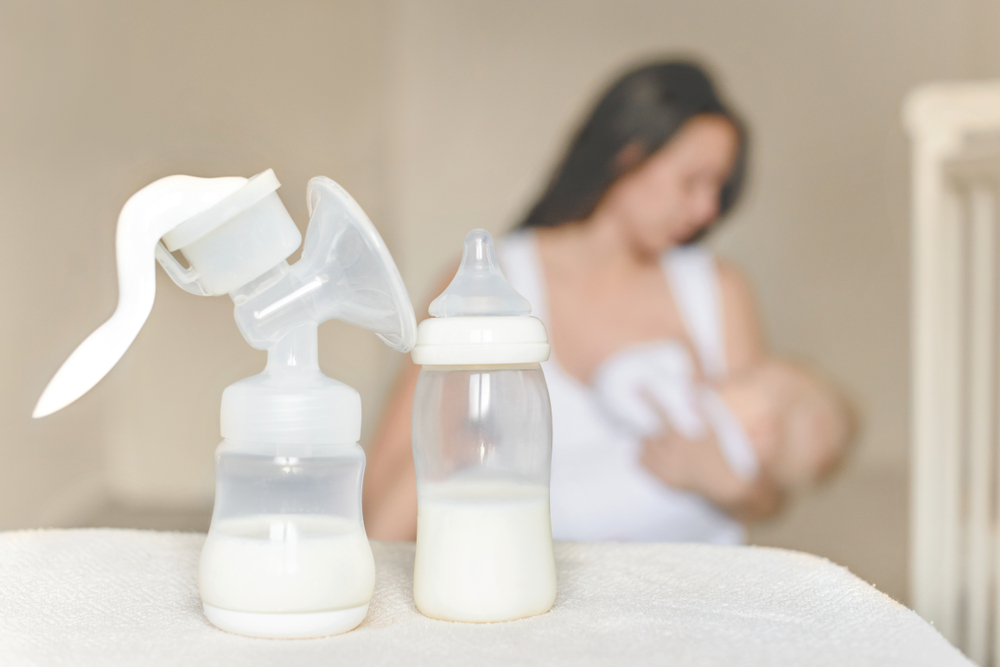Nipple confusion refers to the difficulty some breastfed babies may experience when introduced to bottle or dummy teats. While some infants switch between feeding methods with no issues, others may struggle, leading to concerns about disrupted breastfeeding.
This article explores what nipple confusion is, what the research says, and how to manage its impact.
What Does the Research Say?
Research on nipple confusion is mixed. Some experts see it as a real concern, while others point to a lack of strong evidence.
A recent review linked artificial teats to issues like early weaning, poor latch, and breastfeeding refusal. However, it didn’t clarify how these effects were measured or whether they were caused directly by teat use.
Another review highlighted the challenge of proving whether negative impacts were due to bottles or pacifiers, or other unrelated factors. That same paper found most negative effects were tied to bottle use, with little evidence that pacifiers alone cause nipple confusion.
How Breastfeeding Differs from Bottle Feeding
Breastfeeding involves a coordinated effort between mother and baby, creating pressure changes to draw milk effectively. Here’s how it works:
- Baby latches and stimulates the breast.
- The let-down reflex releases milk into the ducts.
- High pressure builds in the breast.
- Baby’s tongue moves in a wave-like motion, creating suction with sealed lips.
- Milk flows from high pressure (breast) to low pressure (baby’s mouth), and baby swallows.
This wave-like motion is less pronounced during bottle feeding. A Japanese study showed different jaw movements in breastfed vs. bottle-fed babies, with breastfeeding requiring more effort.
An Australian study was completed to monitor the difference between feeding at the breast and feeding from a bottle. They created a special teat that only released milk when suction was applied. Key findings included:
- Teat and nipple sat similarly in the baby’s mouth.
- Breast tissue expanded more than the teat during feeding.
- Babies applied stronger suction when breastfeeding.
- Babies took in more milk from the breast than from the teat.
Managing the Introduction of Artificial Teats
- If you choose to introduce bottles or dummies while breastfeeding, be mindful of potential impacts.
- Observe baby’s response: If there’s no change, they’re likely adapting well. If baby shows frustration or difficulty at the breast, revisit latch and positioning basics. See our previous blog for helpful tips.
- Use responsive feeding techniques:This gives baby control and helps mimic breastfeeding. Keep baby upright and hold the bottle horizontally to pace the feed.
- Seek support if needed: If challenges continue, consult a lactation consultant or breastfeeding professional.
Finally, remember that nipple confusion isn’t the only concern. Replacing breastfeeds with bottles can reduce milk removal, potentially affecting your supply. This is important for those considering combination feeding or needing to supplement.
References
Cavalcante, V. d. O., de Sousa, M. L., Pereira, C. d. S., da Silva, N. O., Rodrigues de Albuquerque, T., & Callou Cruz, R. d. S. B. L. (2021). Consequences of Using Artificial Nipples in Exclusive Breastfeeding: An Integrative Review. Aquichan.
França, E. C. L., Sousa, C. B., Aragão, L. C., & Costa, L. R. (2014a). Electromyographic analysis of masseter muscle in newborns during suction in breast, bottle or cup feeding. BMC Pregnancy and Childbirth, 14(1), 154. https://doi.org/10.1186/1471-2393-14-154
França, E. C. L., Sousa, C. B., Aragão, L. C., & Costa, L. R. (2014b). Electromyographic analysis of masseter muscle in newborns during suction in breast, bottle or cup feeding. BMC Pregnancy and Childbirth, 14(1), 154. https://doi.org/10.1186/1471-2393-14-154
Geddes, D. T., Sakalidis, V. S., Hepworth, A. R., McClellan, H. L., Kent, J. C., Lai, C. T., & Hartmann, P. E. (2012). Tongue movement and intra-oral vacuum of term infants during breastfeeding and feeding from an experimental teat that released milk under vacuum only. Early Human Development, 88(6), 443-449. https://doi.org/https://doi.org/10.1016/j.earlhumdev.2011.10.012
Matsubara, M., & Inoue, M. (2019). A comparison of the movement of the mandible in infants between breastfeeding and bottle-feeding.
Neifert, M., Lawrence, R., & Seacat, J. (1995). Nipple confusion: toward a formal definition. J Pediatr, 126(6), S125-129. https://doi.org/10.1016/s0022-3476(95)90252-x
Newman, J., & Wilmott, B. (1990). Breast rejection: a little-appreciated cause of lactation failure. Can Fam Physician,36, 449-453.
Praborini, A., Purnamasari, H., Munandar, A., & Wulandari, R. A. Hospitalization for Nipple Confusion. A Method to Restore Healthy Breastfeeding(2), 69-76. https://doi.org/10.1891/2158-0782.7.2.69
World Health, O. (2017). Guideline: protecting, promoting and supporting breastfeeding in facilities providing maternity and newborn services. World Health Organization.
